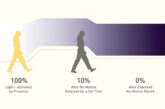
The technical team at Enkin explore single-phase and three-phase power supplies and define the key features that set the two apart.
Single-phase and three-phase power supplies each have roles that they perform best, and the two are notably quite different from one another in terms of power delivery. In this article, we aim to outline their key differences, and the tasks they’re most suitable for.
What is a ‘phase’ in electricity?
A phase is a current within a wire that produces electrical signals in a waveform. This waveform is visible via an oscilloscope, and a phase can be determined by the unit type by knowing the load that they distribute.
Single-phase power
In a single-phase power supply, there are two wires: one power (phase) wire that delivers the current, and one neutral wire. The neutral wire isn’t considered a phase wire as it carries current back from the load to the source.
During the phase cycle, power delivery fluctuates in voltage, and the power wave peaks at 90 and 270 degrees. This means that power delivery is at maximum at two points during the power delivery cycle, and dips at other times to less than optimum.
Single-phase is primarily used for domestic properties, being more suitable for lighting, sockets, and switches, however, a three-phase supply may be required for greater loads. Three-phase systems can also be converted to three single-phase supplies and doing this will allow an even spread of the load across the three phases.
Three-phase power
A three-phase system consists of three power wires, arranged to be out of phase with one another by 120 degrees. This means that all three phases of power have entered the cycle by 120 degrees, and all three phases peak at different times during a complete cycle. This creates waveforms with no peaks or drop-offs, resulting in a much smoother and more consistent power supply when compared with single-phase power.
Not only does this mean they’re far more efficient at power distribution over long distances, but three-phase power also has a much higher power capacity than its single-phase counterpart, making it a great application in commercial and industrial settings.
Loads in a three-phase system should be balanced to ensure even power distribution across all phases. A balanced load minimises the risk of voltage fluctuations, ensuring the system operates efficiently.
The two most common configurations of three-phase systems are known as Delta and Wye. Both have the capability to deliver power over three wires, however the differences between the two are based on the number of wires available, as well as the current. The Delta connection has only three wires, whereas the Wye configuration carries a neutral wire that allows both single-phase and three-phase connections.
Single-phase vs three-phase power
It’s important to note the voltage difference between single- and three-phase supplies. When using a single-phase supply, the voltage is limited to230VAC.
However, when three-phase is being used you may find up to 400 V between phases. This is due to the power transfer in three-phase being almost double that of a single-phase supply.
As a by-product of this, a three-phase power supply is vastly more efficient, able to transmit three times the power that a single-phase supply is capable of, while needing only two more wires.
Browse Enkin’s range of dimming products and get more technical support here
Read more technical articles here









